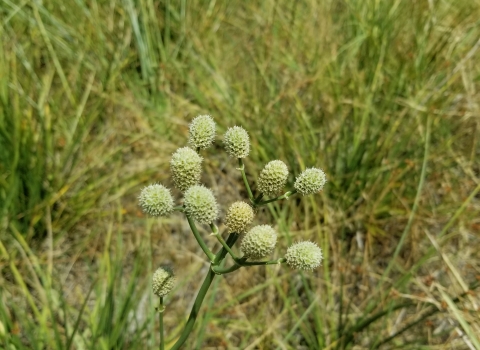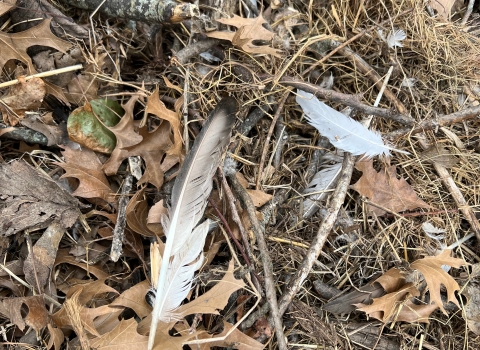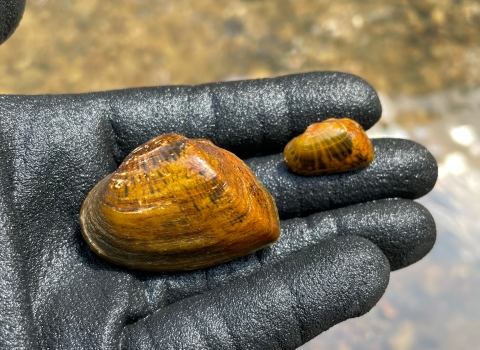RENO, NV – U.S. Secretary of the Interior Sally Jewell announced that the U.S. Fish and Wildlife Service has determined that the Bi-State population of greater sage-grouse does not require the protection of the Endangered Species Act (ESA).
Secretary Jewell joined with USDA Under Secretary Robert Bonnie, Nevada Governor Brian Sandoval, California Natural Resources Agency Secretary John Laird and other state and local partners to celebrate an extensive and long-term conservation partnership on behalf of the bi-state greater sage-grouse population. Federal, state and private partners have come together to proactively conserve key habitat and significantly reduce long-term threats to this distinct population segment of greater sage-grouse.
A key factor in the decision not to list the bird was the development of The Bi-State Action Plan, a conservation plan developed by partners in the Bi-State Local Area Working Group over the past 15 years and secured with $45 million in funding. This adds to nearly $30 million worth of conservation work USDA and other partners have already completed to implement this plan.
“Thanks in large part to the extraordinary efforts of all the partners in the working group to address threats to greater sage-grouse and its habitat in the Bi-State area, our biologists have determined that this population no longer needs ESA protection,” said Jewell. “What’s more, the collaborative, science-based efforts in Nevada and California are proof that we can conserve sagebrush sagebrush
The western United States’ sagebrush country encompasses over 175 million acres of public and private lands. The sagebrush landscape provides many benefits to our rural economies and communities, and it serves as crucial habitat for a diversity of wildlife, including the iconic greater sage-grouse and over 350 other species.
Learn more about sagebrush habitat across the West while we encourage sustainable economic development.”
“This is welcome news for all Nevadans. I applaud the local area working group, private citizens, Tribes, the Nevada Department of Wildlife and our federal partners for their tremendous efforts to develop conservation actions that preclude the need to list the species while still allowing for sustainable economic development,” said Sandoval. “Today’s announcement highlights the critical partnerships that must exist for our conservation strategies to be effective and demonstrate that sage grouse and economic development can coexist in both the bi-state area and across the range of the greater sage grouse.”
“Together, we’ve worked with ranchers, conservation groups, local governments in Nevada and California to take proactive steps to restore and enhance sage-grouse habitat while also helping them improve their ranching operations,” Bonnie said. “The decision to not list the bi-state sage-grouse proves this work has paid off.”
“The efforts of the local working group and the partnerships they’ve built over the past decade are truly unprecedented,” said Dan Ashe, U.S. Fish and Wildlife Service Director. “They have set the stage for the next generation of conservation and convinced us that the sage-grouse population has a bright future in the Bi-State region.”
“California is committed to continue working with our public and private partners in implementing this strong, science-based conservation plan into the future,” said Laird. “This partnership between California and Nevada serves as a model for effective conservation of the Greater sage-grouse in other Western states.”
As its name suggests, the Bi-State Distinct Population Segment straddles the California-Nevada border, where biologists estimate that between 2,500 and 9,000 of these ground-dwelling birds inhabit about 4.5 million acres of high-desert sagebrush. Greater sage-grouse are known for the males’ flamboyant springtime mating displays on traditional dancing grounds, also known as leks. The birds use a variety of sagebrush habitats throughout the year on private, state and federal lands.
The U.S. Fish and Wildlife Service declared the Bi-State population of greater sage-grouse a Distinct Population Segment (DPS) under the ESA in 2010 because genetic analysis shows it has been separated from other greater sage-grouse for thousands of years and the genetic differences are significant.
In October 2013, the Service proposed listing the Bi-State DPS as threatened under the ESA based on significant population declines due to the loss and fragmentation of its sagebrush habitat from urbanization and associated infrastructure development, encroachment of sagebrush by conifers, and a vicious cycle of wildfire and fire-adapted invasive grasses. These threats, combined with the relatively limited number of birds, the small population size and their isolation, were determined to pose a significant threat to the species.
The Service is withdrawing this proposal in large part because of the success of the Bi-State Action Plan. The plan is the product of the Bi-State Area Local Working Group, comprising federal, state and local agencies and landowners from Nevada and California, which has been pursuing sage-grouse conservation since the early 2000s. Since then, the working group’s technical advisory committee has finalized plans on nearly 80 science-driven conservation projects specifically designed to reduce identified threats and protect the sagebrush-steppe habitat.
The working group’s executive oversight committee has raised more than $45 million in federal and state funding to ensure the projects are implemented and completed over the next 10 years. Long-term projects implemented under the Bi-State Action Plan include population monitoring, urbanization abatement measures, livestock management, wild horse management, pinyon and juniper removal, disease and predation studies and other habitat improvement and restoration projects.
Each of the projects is tied to a specific population management unit within the region, led and funded by a specific agency or partnership, and ranked by the immediacy of the threat to the species.
The comprehensive plan and funding commitments give the Service confidence that effective conservation measures needed to address threats to the species are highly likely to be implemented.
The working group members include private landowners in California and Nevada, Nevada Department of Wildlife, California Department of Fish and Wildlife, Nevada Division of Forestry, California State Parks, University of Nevada Cooperative Extension, nongovernmental organizations such as Nevada Wildlife Federation, Washoe Tribe of California and Nevada, Los Angeles Department of Water and Power, Bureau of Land Management, U.S. Forest Service, Natural Resources Conservation Service, U.S. Geological Survey, Department of Defense and the U.S. Fish and Wildlife Service.
Conservation work on private lands – through easements and habitat restoration – has played an important role in connecting national forests and other public lands, working to keep habitat intact. The U.S. Department of Agriculture’s Natural Resources Conservation Service has already invested nearly $20 million in conservation assistance to ranchers through this effort. This has helped ranchers protect 7,300 acres of key summer habitat through easements, with an additional 4,500 acres in process. This investment has also helped them remove invading juniper and pinyon trees, enhancing nearly 4,000 acres of important sagebrush-steppe habitat.
This summer, the Forest Service will begin treatments to improve sagebrush ecosystem health on 29,000 acres of key habitat for the sage grouse.
The USGS has been a key partner in monitoring the Bi-State population and interpreting data collected to assure the Bi-State partners are using the best science in their conservation efforts.
Along with withdrawing the listing proposal, the U.S. Fish and Wildlife Service is also withdrawing proposed rules under section 4(d) of the ESA and the proposed designation of critical habitat.
The U.S. Fish and Wildlife Service is concurrently conducting a separate status review for the greater sage-grouse across its 11-state range. In 2010, it determined the greater sage-grouse was warranted for protection but that action was precluded by higher priorities. A determination on whether the species still requires protection is due Sept. 30, 2015.
The deteriorating health of the greater sage-grouse and western sagebrush landscapes has sparked an unprecedented and proactive partnership across eleven states to conserve the uniquely American habitat that supports diverse wildlife, outdoor recreation, and ranching and other traditional land uses that form the cornerstone of the Western way of life.
For more detailed information on the Bi-State DPS of the greater sage-grouse and its habitat, along with more information about conservation projects that are being done to help protect this unique species, visit www.fws.gov/greatersagegrouse.
###



